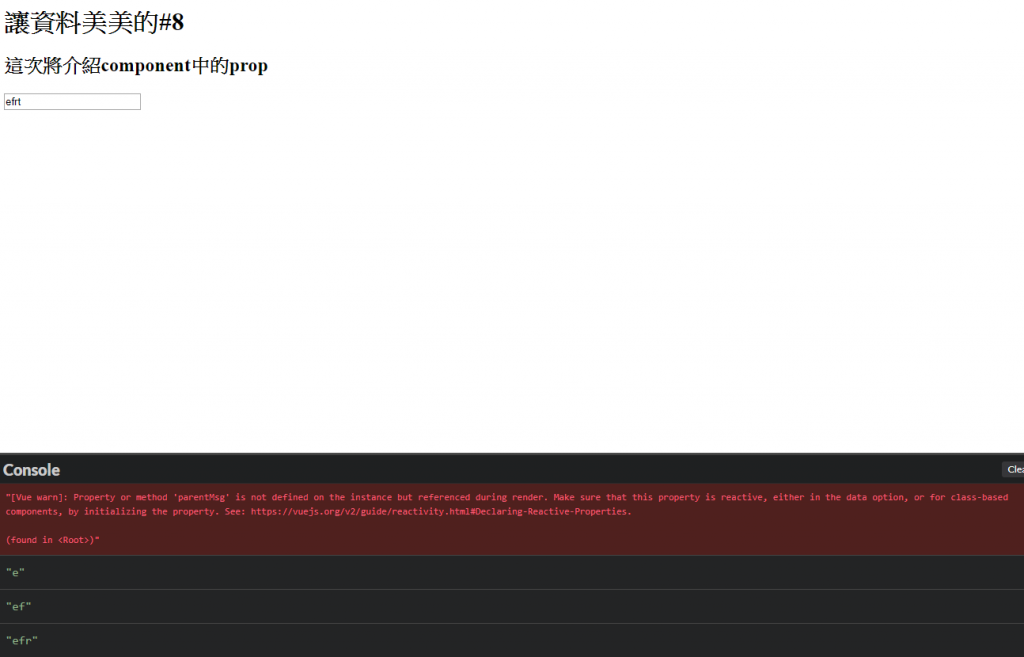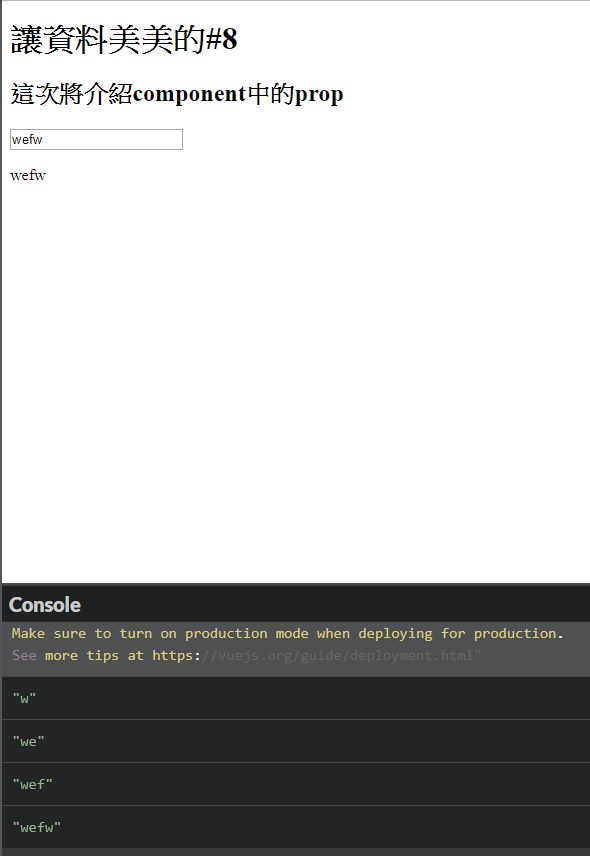首先在component的data中定義parentMsg,在props中定義message
在定義一個function,change,來抓取input的值
data(){
return{
parentMsg:""
}
},
props:{
message:""
},
methods:{
change(code){
console.log(this.parentMsg);
}
},
});
在component中的template加入input
並且用v-bind來綁定parentMsg為message的值
@:input來監看input中的值是否改變 (@就是v-on)
利用$event.target.value來得到input的值並回傳到change
此時會在console顯示目前parentMsg的值
template: `
<div>
<input type="text"
v-bind:parent-msg="message"
@input="change($event.target.value)">
</div>
`,
在html中放入定義的component也就是viwer,並且利用v-model綁定parentMsg給viwer也就是綁定給input來實現雙向綁定,讓值可以順利傳遞
#root
h1 {{title}}
h2 {{subtitle}}
viwer(v-model="parentMsg")

這邊不知道為何會報錯,但是將instance中的data也加入parentMsg的定義之後,錯誤訊息就不會出現了
var vm = new Vue({
el: "#root",
data: {
title: "讓資料美美的#8",
subtitle: "這次將介紹component中的prop",
parentMsg:"",
},

最後我希望將input的內容也可以顯示到網頁上
所以在template中加上<p>{{this.parentMsg}}</p>
在change中更新parentMsgthis.parentMsg=code;
var viwer=Vue.component('viwer',{
template: `
<div>
<input type="text"
v-bind:parent-msg="message"
@input="change($event.target.value)">
<p>{{this.parentMsg}}</p>
</div>
`,
data(){
return{
parentMsg:""
}
},
props:{
message:""
},
methods:{
change(code){
this.parentMsg=code;
console.log(this.parentMsg);
}
},
});
完整程式碼https://codepen.io/FanWay/pen/EoZvaY
